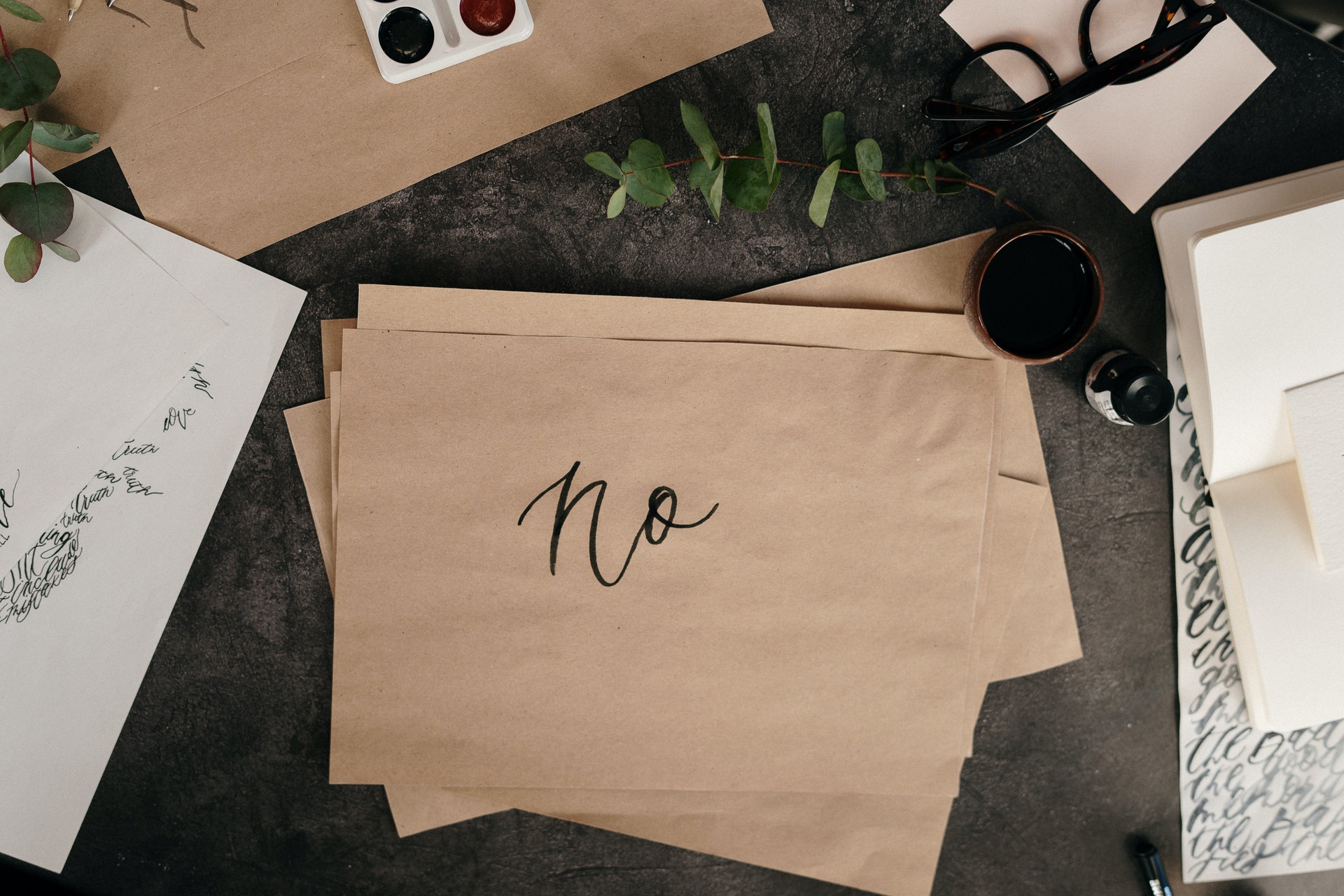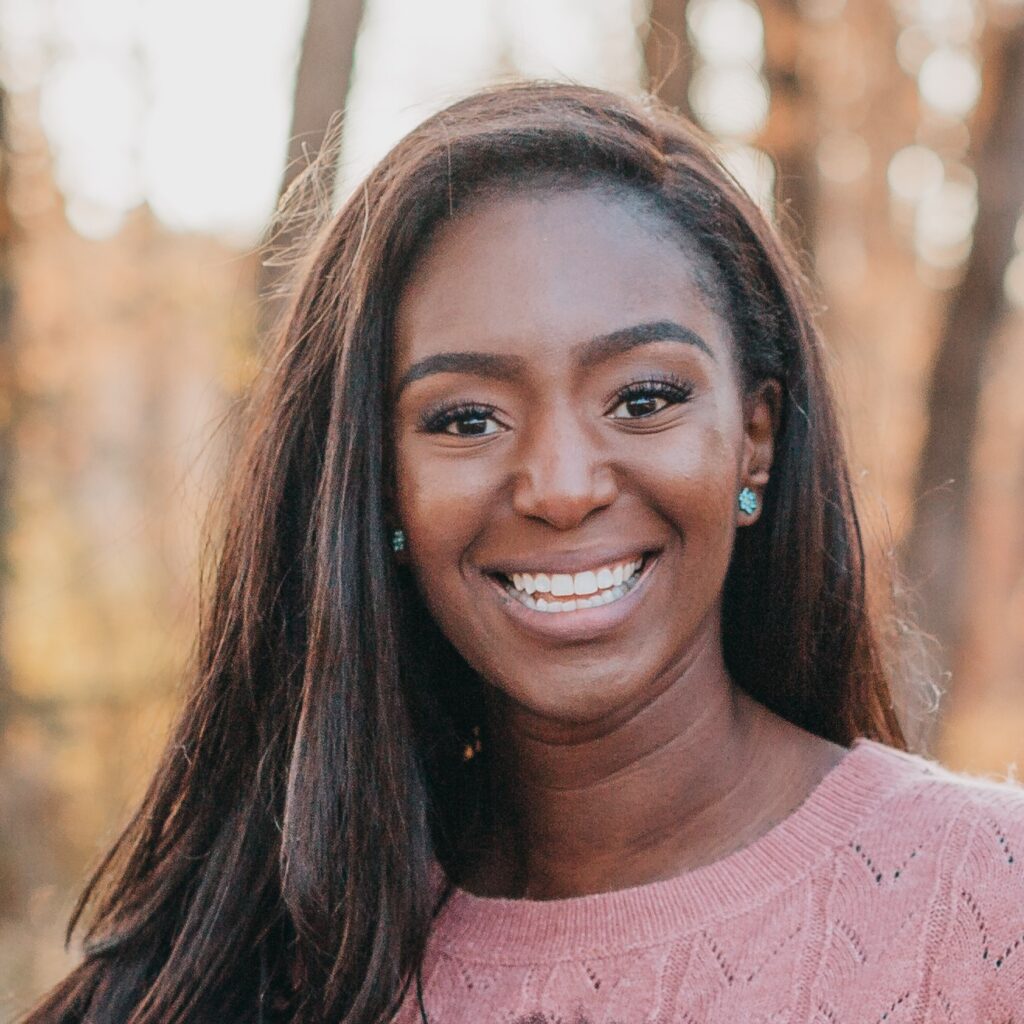Let’s face it: saying no can be really hard to do. Or maybe you have no problem saying no but somehow you still end up helping someone or doing something that you said no to.
Trust me – I’ve been there. It’s not fun.
In my last post, I talked about the two things you need to consider first in order to say a confident, unwavering “no” to any request. For a lot of people, knowing these two things – your will and your ability – is all that’s needed to successfully decline an ask. But for others, saying no is still a skill yet to be mastered.
That was certainly my issue, even after I established healthy boundaries to protect my core values. I still had a hard time saying no to certain things.
To be honest, it wasn’t until I got married and observed my hubby effortlessly shutting down requests with poise and kindness that I realized
- Saying no can be done
- Saying no is a skill
- There are things we shouldn’t do when saying no
If you’re interested in learning how to say no is a nicer way (because you’ve mastered the art of saying no but it still sounds a little harsh to you), then make sure you check out my FREE guide on 7 Ways to Make Your “No” Easier to Accept.
Ready to learn this skill? Below are three things you need to do when saying no.
How to say no
Once you’ve thought about your will and ability and factored them into your decision to decline a request, actually saying no is much more straight forward. The three things you should do include:
Be direct
Ever been in a situation where you just couldn’t say the word “no”? How did that work out for you? For me, the person asking me for help ended up assuming that my lack of saying no meant that I was saying yes.
*Sigh*
This has happened to me too many times. Please don’t repeat my mistake.
Make sure you actually say “no” so it’s clear what your answer is.
That’s right, say it with me: NO
And now say the word “no” next time someone asks you to do something that you don’t want to or know you can’t help with. It’s okay, they won’t explode if you say no.
Alas, some people might still be a little wary of saying no. If the word “no” is still too nerve-wracking to use, try “I can’t” or “I’m not able to”.
Be precise
So many of us give a person our long-winded essay answer when trying to say no. It’s no wonder that the other person gets confused and thinks we’ve said yes when we were actually saying no.
The fix? A short answer.
Give a concise response that includes the word “no”, or a derivative of the word. Basically, if you feel an explanation is required, keep it simple and short. Short answers can’t be dissected as much as long ones and simple responses keep the message direct. This means there’s a good chance the person will know that you’re saying no and won’t feel like you’re trying to make a tonne of excuses to get out of helping them.
Be upfront
Have you ever asked a person for help and then they went on about something else before giving you their answer? Or, have you had to wait days for an answer as the person skidded around your request?
I have been that person on the receiving end.
Newsflash: people asking us for help want an answer. Sometimes an explanation is nice, but what they’re usually looking for is a yes or no, and most of the time they want it right away.
So do your best not to keep people waiting long for a response. And try saying no early in your response so that your “no” doesn’t get lost in communication. You can even repeat it a few times, for those people who only remember the last thing they hear. Whatever you do, try starting with your “no” when responding to someone.
Examples of saying no
- Thanks for asking. I’ll have to say no. (NOT “Thanks for asking. I’ll have to say no on this/in this case.” The second option leaves the impression that if they asked for something slightly different but still along the same lines as the previous request, you would say yes)
- Unfortunately, it’s a no from me. OR I’m not able to help out. Sorry! (NOT “Unfortunately, it’s a no from me right now/at this time.” OR “I’m not able to help out right now/at this time…” The second options leave the impression that you would say yes at a different time.)
The first options in these examples are direct, short, and to the point. To do this effectively, you’ll need strong boundaries and self-awareness of your values. My FREE e-book Completely You: The Workbook can help you determine what you value and the lengths you’re willing to go to protect those values.
Honestly, you could stop here and start practicing saying no. But if you’re wondering why I don’t suggest the answers in the brackets, continue reading for more details!
(For those of you who are pros at this and want to figure out how to say “yes” in a healthier way, I have a FREE How to Say Yes Cheat Sheet. It will give you the key things you need to make your “yes” work for you while maintaining your values and boundaries.)
What not to do when you say no
Now that you know how to say no, I wanted to be clear on popular things you might be told to do that you really shouldn’t. Avoiding these three mistakes when saying no makes sense when you understand the importance of your “will” and “ability”. (If you’re not sure what I mean about your “will” and “ability”, check out my last post.)
Give a reason that leads to a “yes”
Remember how I’ve mentioned the importance of considering if you’re willing to say yes to someone (see this post)? Well if the ask doesn’t match your values, ignores your boundaries, and can negatively influence your heart, then giving a reason that leaves the possibility for a “yes” is counterproductive.
For example, if someone wants you to participate in a certain activity with them, but based on your values and inner person that activity is a no-go for you, don’t tell them you can’t because you made other plans today. The person can counter with “what about next week?”. Then what will you say? If you give a reason, and only if, connect the reason back to your will.
Provide an alternative that involves you
When considering your ability, don’t give the person another option that includes yourself if your ability to help won’t change. If you don’t have the time, energy, capabilities, or mental/emotional availability to assist the person, do not suggest something that still requires your ability.
Yes, your ability might change, but unless you know when that change is coming, don’t offer yourself when you’re truly unable to lend a hand. However, that doesn’t mean you can’t give the person another option! Direct them to another resource (person, place, thing) that’s able to help out.
Accept condemnation
Nobody tells us to accept guilt and shame when we say no to people, but it happens. It definitely happened to me before I discovered my core values and established boundaries. This do-not is based on the simple fact that saying no is not selfish or a rejection of a person. It communicates to others what we treasure in life and that we care about our wellbeing, while expressing that we care greatly about the person asking us for help.
How does considering your will and ability express care? Well, when you say yes because you will and can help, you end up assisting the person out of love and joy. If you say yes when you really mean no, you’ll be frustrated, resentful, tired, angry, and burnt out – you won’t actually be able to care for the person. Nobody wants the second kind of helper. So, when you say no after considering your will and ability, you can rest assured that you are not doing something that will most definitely lead to a negative impact on your relationship – at least not from your end.
Still, some people may not hear your “no” or take your refusal too well. Check out my FREE 7 Ways to Make Your “No” Easier to Accept guide where you’ll learn a few things you can do to say no in a way that people can’t take “yes” for an answer.
What gets in the way of you saying no? Is it your will, your ability, how you say no, or your doing the things you shouldn’t? Let me know in the comments below! And don’t forget to share this post with a friend so they can learn how to say no too.

Vee Mawoyo
I balance the roles of mother, wife, Family Medicine resident, and associate pastor. Outside of coaching people on how to optimize their wellbeing, I’m regularly looking for ways to support ladies in living more meaningful lives. I enjoy leading devotional studies, facilitating classes and workshops on medical topics, and grabbing a good cup of tea with a girlfriend, all with the intention of helping women live completely as themselves!



